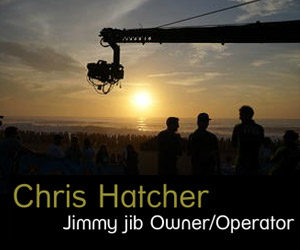Broadcast News
12/01/2016
Acceptance Testing In Complex Systems

Acceptance Tests are a natural part of any system installation, standard or bespoke.
However, the acceptance and handover of broadcast systems is becoming more onerous due to increasing system complexity and the rapid pace of change. For example, a number of software based products from different vendors may need to interface to each other despite launching in a time of changing standards.
"Life was certainly a lot simpler joining hardware products by a length of coax with a defined standard!" says Tom Swan, Sales and Marketing Director of system integrator dB Broadcast.
dB Broadcast has developed acceptance processes and associated procedures specially developed for its system integration work within the broadcast industry and these are customised for each project undertaken. dB works with the customer's engineering personnel to prepare and agree the details of the acceptance protocols for each phase of the acceptance tests.
In order to ensure a trouble free transfer of services and operational start-up for a new area or facility and to confirm the satisfactory attainment of project objectives, dB will carry out a series of staged acceptance tests. Here, Tom summarises the company's approach to acceptance testing.
Factory Acceptance Tests (FAT)
The FAT is a customised testing stage carried out at dB's facility, and is executed before shipping the pre-built system to site. dB carries out as much work at this stage as it can, finding that this reduces problems later on, and minimises downtime and the overall impact on the customer. The FAT is often carried out alongside the customer and includes confirmation of the general functionality of the system or parts of the system, confirmation of quality of build, and confirmation of equipment against the bill of materials.
Site Acceptance Tests (SAT)
The final acceptance of the facility at the client site is probably the most important phase of any complex broadcast facility build – and can often be the most stressful due to approaching deadlines. From experience, dB Broadcast has learnt the importance of allowing sufficient time and resource to undertake this work. This phase is a joint responsibility between dB Broadcast and the customer, and is further complicated by the need to involve many other groups: Operational Staff, Service Departments, Vendors, Network Departments to mention but a few. For this reason it is vital to the success of this phase that there are clearly agreed responsibilities, test scripts and an agreed defects handling process.
Defects handling system
The importance of a flexible, reliable defects handling system should not be under estimated. It should not be over complicated but needs to be effective and the process understood by all, this system will be heavily used during a critical phase of the delivery.
If an issue occurs, an Issue Report is generated, which will be processed according to an Issue Handling Procedure. The severity level is assessed on a scale from Critical Failure to Cosmetic Issues and Change Requests. Responsibilities are defined for rectifying the issue(s), and as they are resolved, testing and sign-off are performed at sub-system, Core and Infrastructure Integration levels, followed by Overall Acceptance Testing sign-off.
A rigorous and systematic procedure such as this can help to ensure that even in times of great complexity, system operation can be assured.
www.dbbroadcast.co.uk
(JP/MH)
However, the acceptance and handover of broadcast systems is becoming more onerous due to increasing system complexity and the rapid pace of change. For example, a number of software based products from different vendors may need to interface to each other despite launching in a time of changing standards.
"Life was certainly a lot simpler joining hardware products by a length of coax with a defined standard!" says Tom Swan, Sales and Marketing Director of system integrator dB Broadcast.
dB Broadcast has developed acceptance processes and associated procedures specially developed for its system integration work within the broadcast industry and these are customised for each project undertaken. dB works with the customer's engineering personnel to prepare and agree the details of the acceptance protocols for each phase of the acceptance tests.
In order to ensure a trouble free transfer of services and operational start-up for a new area or facility and to confirm the satisfactory attainment of project objectives, dB will carry out a series of staged acceptance tests. Here, Tom summarises the company's approach to acceptance testing.
Factory Acceptance Tests (FAT)
The FAT is a customised testing stage carried out at dB's facility, and is executed before shipping the pre-built system to site. dB carries out as much work at this stage as it can, finding that this reduces problems later on, and minimises downtime and the overall impact on the customer. The FAT is often carried out alongside the customer and includes confirmation of the general functionality of the system or parts of the system, confirmation of quality of build, and confirmation of equipment against the bill of materials.
Site Acceptance Tests (SAT)
The final acceptance of the facility at the client site is probably the most important phase of any complex broadcast facility build – and can often be the most stressful due to approaching deadlines. From experience, dB Broadcast has learnt the importance of allowing sufficient time and resource to undertake this work. This phase is a joint responsibility between dB Broadcast and the customer, and is further complicated by the need to involve many other groups: Operational Staff, Service Departments, Vendors, Network Departments to mention but a few. For this reason it is vital to the success of this phase that there are clearly agreed responsibilities, test scripts and an agreed defects handling process.
Defects handling system
The importance of a flexible, reliable defects handling system should not be under estimated. It should not be over complicated but needs to be effective and the process understood by all, this system will be heavily used during a critical phase of the delivery.
If an issue occurs, an Issue Report is generated, which will be processed according to an Issue Handling Procedure. The severity level is assessed on a scale from Critical Failure to Cosmetic Issues and Change Requests. Responsibilities are defined for rectifying the issue(s), and as they are resolved, testing and sign-off are performed at sub-system, Core and Infrastructure Integration levels, followed by Overall Acceptance Testing sign-off.
A rigorous and systematic procedure such as this can help to ensure that even in times of great complexity, system operation can be assured.
www.dbbroadcast.co.uk
(JP/MH)
More Systems Integration Stories
13/03/2018
BFV's Big Interview: Danmon Group
This month, Broadcast Film & Video discusses System Integration, the future of broadcasting, and technical development with Christoffer Kay, Chief Ope
BFV's Big Interview: Danmon Group
This month, Broadcast Film & Video discusses System Integration, the future of broadcasting, and technical development with Christoffer Kay, Chief Ope
08/02/2018
Systems Integration: Successes, Challenges And What's Next
The broadcast industry is in a strange position where a slight reticence remains around new technologies' suitability for live operation. This means t
Systems Integration: Successes, Challenges And What's Next
The broadcast industry is in a strange position where a slight reticence remains around new technologies' suitability for live operation. This means t
08/03/2017
AKA Design Welcome The Rise Of Flexible Working
Sit-stand desks are said to be beneficial towards a person's health, mood and productivity, according to research, so it's no surprise that AKA Design
AKA Design Welcome The Rise Of Flexible Working
Sit-stand desks are said to be beneficial towards a person's health, mood and productivity, according to research, so it's no surprise that AKA Design
15/12/2016
Timeline Television Completes Design & Build Of BT Sport's Home
We were delighted to have been selected by BT Sport to lead on the transformation of part of the former International Broadcast Centre at the Queen El
Timeline Television Completes Design & Build Of BT Sport's Home
We were delighted to have been selected by BT Sport to lead on the transformation of part of the former International Broadcast Centre at the Queen El
15/12/2016
System Design Should Include Service Design
The term 'tech support' can conjure up some not-so-flattering images of sun-shy geeks speaking their own kind of binary language… but when a system cr
System Design Should Include Service Design
The term 'tech support' can conjure up some not-so-flattering images of sun-shy geeks speaking their own kind of binary language… but when a system cr
09/12/2016
SIs Pour Their Hearts Into Software & IP Tech
Vendors don't want to fight with their SI partners: George Jarrett plays it again with SAM and talks to ATG Danmon and TSL Systems about the technical
SIs Pour Their Hearts Into Software & IP Tech
Vendors don't want to fight with their SI partners: George Jarrett plays it again with SAM and talks to ATG Danmon and TSL Systems about the technical
20/07/2016
Altered Images Completes Coventry University Project
Coventry University is a forward-looking, modern university with a proud tradition as a provider of high quality education and a focus on applied rese
Altered Images Completes Coventry University Project
Coventry University is a forward-looking, modern university with a proud tradition as a provider of high quality education and a focus on applied rese
20/06/2016
System Integrator Looks To The Future
The transition to 4K and IP architecture implies more sophistication, and for systems integrators such as dB Broadcast, more intelligent systems mean
System Integrator Looks To The Future
The transition to 4K and IP architecture implies more sophistication, and for systems integrators such as dB Broadcast, more intelligent systems mean
11/03/2016
IP Infrastructure Is Ready For The Challenge
In this second of two articles, Tom Swan, Sales and Marketing Director of dB Broadcast, explains how the system integrator keeps abreast of all the ch
IP Infrastructure Is Ready For The Challenge
In this second of two articles, Tom Swan, Sales and Marketing Director of dB Broadcast, explains how the system integrator keeps abreast of all the ch
16/02/2016
IP Infrastructure Is Ready For The Challenge
In this latest article, Tom Swan of system integrator dB Broadcast considers the extent to which IP / IT infrastructure is ready for all the challenge
IP Infrastructure Is Ready For The Challenge
In this latest article, Tom Swan of system integrator dB Broadcast considers the extent to which IP / IT infrastructure is ready for all the challenge














